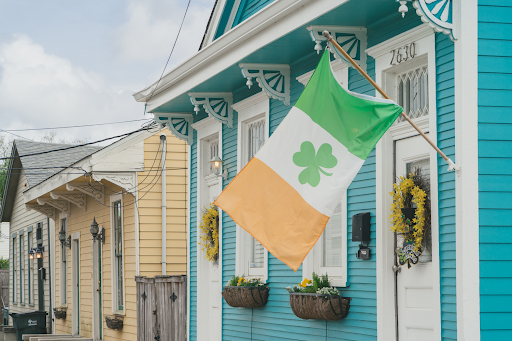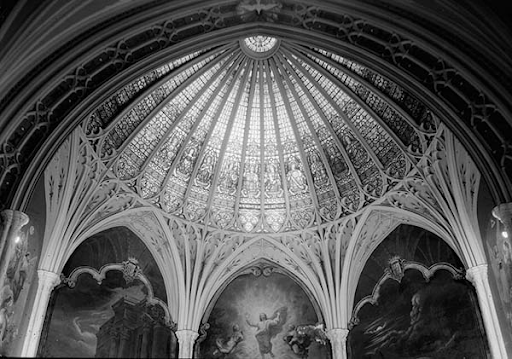Include a Topper!
-
Happy Birthday Banner
$9.00 -
Turkey Cake Topper
$15.00
Add Ons
Your cart is currently empty!
Since 1949 celebrating 75 years. Order online or call us at 1 800 GAMBINO (426-2466)

When one thinks of New Orleans, images of brilliantly colored parade floats and boisterous second lines may spring to mind. Or maybe it’s a vision of the French Quarter with its bright pastel Spanish-style townhouses and Creole cottages. The idea of Gothic Irish architecture and huge St. Patrick’s Day parades is probably the last thing anyone would think of. That’s a shame because the Irish have been in New Orleans almost from the beginning of the colony and their determination to hold onto their culture changed the city for the better.

The City of New Orleans was founded in 1717 as a French colony. Not even 50 years later, she changed hands in a secret Treaty of Paris and became a territory of Spain in 1763. The citizens of New Orleans were understandably upset they were now subject to Spain with no warning. A group of nearly 500 angry Acadians, French, and Germans ousted the first Spanish governor of Louisiana, Antonio de Ulloa.
Clearly, the Spanish crown could not let this rebellion stand and sent General Alejandro O’Reilly with 2,000 troops to secure the colony. O’Reilly, along with many of his troops, was an Irishman who, unhappy with the cruel rule of Ireland by the British, had pledged allegiance to Spain and her Catholic majesties. O’Reilly did indeed secure New Orleans for Spain and became the second Spanish governor of the Louisiana territory. He and his soldiers were among the first of a wave of Irish immigrants coming to the New World but they were far from the last.
A second wave of immigration occurred at the end of the 1700s when a coup attempt by Ireland failed to end British rule. Fleeing to the Americas, thousands upon thousands of the Irish were dropped off in cities like New York, Boston, and New Orleans.
A third wave began in the 1840s with the onset of the Irish Potato Famine and continued through the 1860s. Over 2 million Irish immigrated to the Americas during that time and nearly half a million of them came to New Orleans. Not all of them stayed here however, but many did. In fact, a census conducted in 1850 showed that 20-25% of New Orleans’ citizens were Irish.
One of the misconceptions about the Irish in the New World was that they were all “common laborers.” While many who fled the Great Potato Famine were poor, this idea only tells half the truth. The Irish brought with them a great deal of varied skills which they used to prosper.
In the 1850 New Orleans’ census, more than half of the Irish citizens were listed in positions of educators, bankers, engineers, brewers, architects, nurses and doctors, and more. For those who were laborers, they quickly used their strong sense of community and heritage to band together and form unions along the Port of New Orleans where many of them worked.

It was along the banks of the Mississippi where many of the Irish began to build homes. Because the lots they bought were narrow, the Irish adapted and made their houses long instead of wide. These homes mixed in with those of the other immigrants of what would come to be known as the Irish Channel.
The citizens of the Channel were overwhelmingly Catholic and many wanted to hear mass in English instead of French. So, once again the Irish banded together and began building St. Patrick’s Church in 1833. This church is one of the first examples of Gothic architecture in the city with high arches, tall spires, and a stained-glass dome.

St. Patrick’s feast day had debuted in the city some 20 years before when, in 1806, a group of Irish citizens celebrated the day with 17 toasts to everything from the shamrock to General George Washington. The St. Patrick’s Day traditions grew and now every year there are large parades on March 17th which throw traditional Irish stew ingredients, including cabbage, potatoes, onions, and carrots, out to the crowd.
While this has only broken the surface of the importance of the Irish to the City of New Orleans, this March, celebrate their achievements by wearing a bit of green, having a glass of whiskey, and enjoying a St. Patrick’s Day Parfait Cake from Gambino’s. Our name may be Italian, but on St. Patty’s, everyone is Irish.
Slántie!